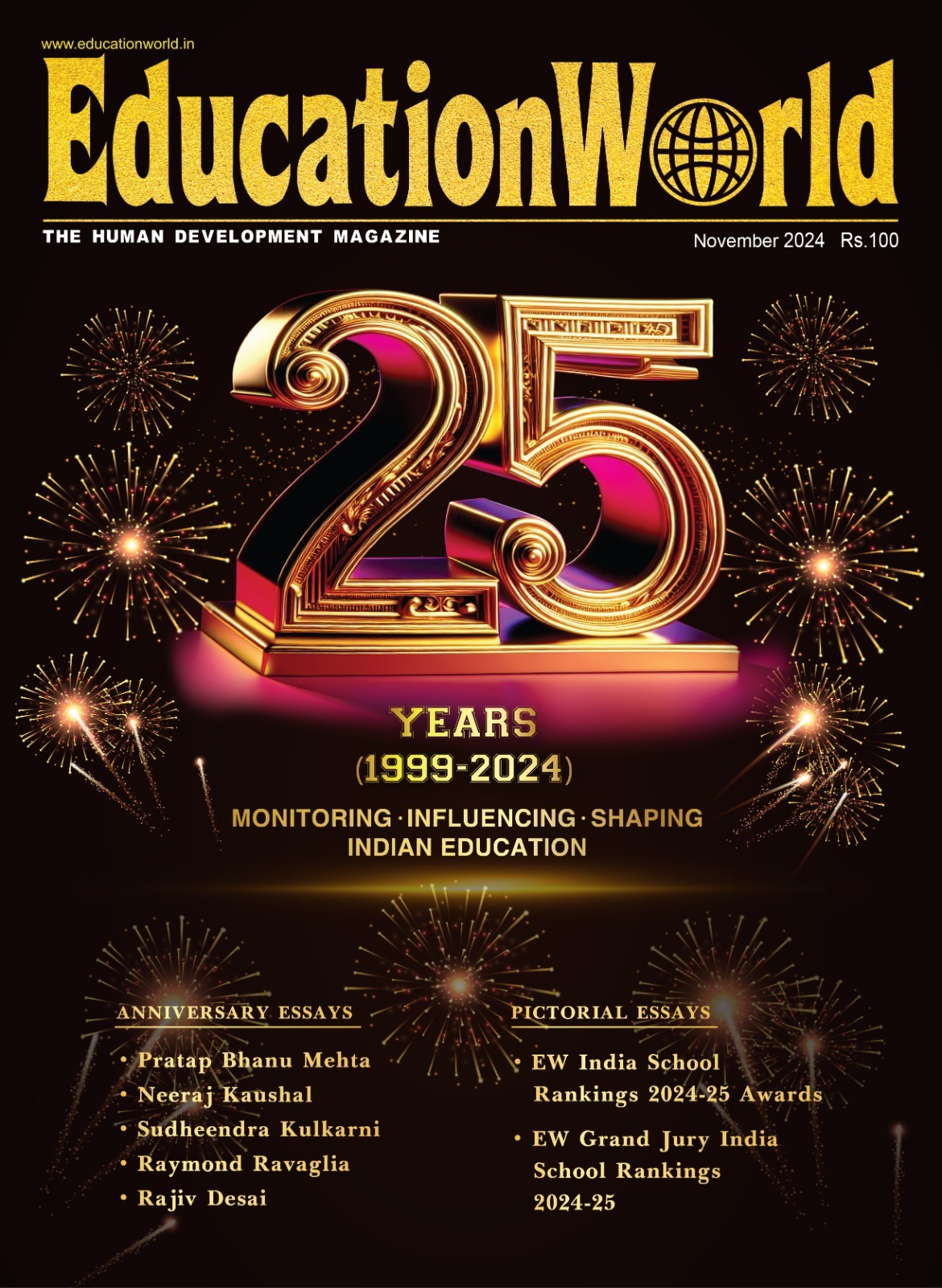Environment Education
Dedicated champions of environmentBittu SahgalAlmost every wildlife preserve in India has a champion identified with its defence. Fateh Singh Rathore saved Ranthambhore; Brijendra Singh protected Corbett Tiger Reserve; the late Humayun Abdulali ensured the survival of what is now the Sanjay Gandhi National Park, Mumbai while H.S. Panwar was the crusader of Kanha. Likewise K.M. Chinappa and Nagarahole are synonymous. The list is long. With the support of ABN Amro bank, Sanctuary magazine has been scouring the country in search of people whose lives are dedicated to the proposition that nothing we can do for our children is more vital than to leave this world safe and habitable for them after we pass on into the great blue yonder. Permit me now to present some more green warriors to whom over 1,000 people gathered at the Tata Theatre, Mumbai gave a standing ovation on December 3.I also urge readers of EducationWorld to log on to the Sanctuary website (www.sanctuaryasia.com) to learn about these Earth Heroes. In the meanwhile, here is information of particular interest to this readership ‚ teachers and students ‚ who are doing their bit to make ours a better world. The Sanctuary-ABN Amro Green Teacher Award was instituted to honour individuals working to communicate wildlife and conservation values to students in India‚s schools and institutions of higher education. Also recognising that they are the carriers of our green baton, a new category of awards was instituted this year to acknowledge and encourage young naturalists and conservationists, for whom the study and defence of nature is a vital objective.The Green Teacher of the Year 2004 is Sonam Wangchuk, founder of the Students Educational and Cultural Movement of Ladakh (SECMOL). Keenly aware that modern education has alienated young Ladakhis from their environment and traditional sustainable lifestyles, Wangchuk and SECMOL are working to reverse this trend through revitalised education and sensitisation of students and teachers to their environment. Wangchuk also helps publish Ladakh‚s Melong, a magazine which highlights environmental and developmental issues of this beautiful mountain region. He has also designed the SECMOL campus which runs on solar energy and prohibits fossil fuels for cooking, lighting or heating even when temperatures fall to minus 25‚ºC. He shares this technology with schools across Ladakh. The Young Naturalist of the Year 2004 is Maan Barua. He has grown up in the environs of Kaziranga national park and has morphed into one of India‚s most promising naturalists and ornithologists. Barua has been in the forefront of field surveys of pheasants in Arunachal Pradesh, eagles in Ladakh and the birdlife of remote wildernesses such as Arunachal‚s Mishmi and Meghalaya‚s Garo Hills. He works with Assamese youth to arouse their interest in Assam‚s vanishing natural heritage. Currently he is writing two books on the birds of Kaziranga and Assam. Barua also works with young people to promote eco and wildlife sensitive tourism and to help them develop natural history skills they could use to protect Assam‚s flora and fauna. The three other Young Naturalists we chose are: Rahul Alvares, an author and snake expert rolled in one. After completing his class X exam in Goa he took a break to work in the Madras Crocodile Bank and Pune‚s Snake Park where he learned the basics of snake-handling and identification. This was the subject of his first book Free From School written at the age of 17. On his return to Goa, Rahul conducted talks on snakes in schools and colleges and joined a turtle conservation programme in Morjim. In 2002, he travelled to Thailand to learn how to handle king cobras. He now rescues snakes from human habitations. These experiences resulted in a second book The Call of the Snake in 2003. Currently Rahul is in college reading for an M.Sc in ecology and environment while continuing to write on wildlife and snake awareness issues for local newspapers. Likewise Aaron Savio Lobo is also obsessed with snakes, particularly sea snakes. He did a one-year dissertation on the distribution and status of snakes in coastal Goa, and won a scholarship to do an M.Sc in wildlife science from the Wildlife Institute of India. A six-month study to estimate the diversity and mortality of sea snakes in Goa earned him the respect of India‚s top wildlife conservation biologists and an award from Cambridge University, UK. Lobo has extensively researched the dog-faced water snake in the Sƒ¡lim Ali Bird Sanctuary, Goa, and intends working in the Gulf of Mannar, to study the area‚s sea snakes and the threats they face.Indrapratap Thakare, whom the villagers of Melghat and Tadoba, Maharashtra, have christened ‚Ëœthe boy with the stick‚, is defined by the wild habitats he lives to defend. Two years ago he helped the forest department crack down on an illegal operation to commercialise the musali medicinal plant from Melghat Tiger Reserve where he also helped identify and study a population of forest owlets, once presumed extinct. Moreover he has researched the endangered Great Indian Bustard in Nanaj, Sholapur and tracked wild buffaloes along the Indravati river. He has also participated in surveys of the submergence zone of the proposed Upper Tapi Stage II dam in Melghat which threatens the Tadoba Tiger Reserve. Simultaneously he is working with the Satpuda Foundation to ensure just and proper resettlement of the people of six villages who have chosen to move out of the Tadoba Tiger Reserve. If you wish to send these dedicated champions of the environment a message of encouragement and thanks, you could e-mail [email protected]. Or write to Sanctuary Asia, 602, Maker Chambers V, Nariman Point, Mumbai 400 021.(Bittu Sahgal is the editor of Sanctuary magazine)















Add comment